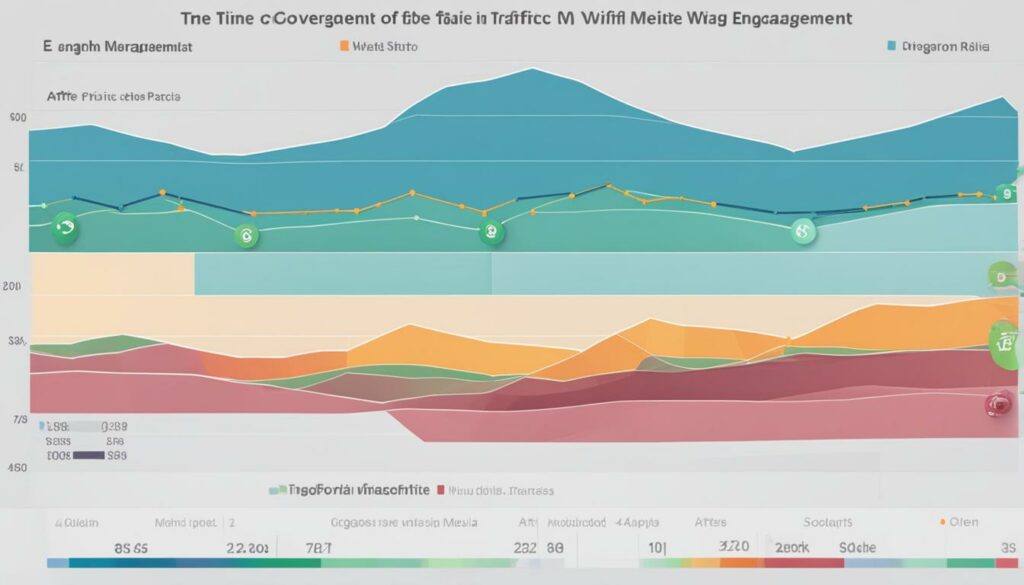Website migration is the process of making significant changes to a website that can impact its visibility to search engines. It involves moving your site from one platform to another, such as changing the domain, server, CMS platform, URL structure, or design. However, successful website migration requires proper planning and execution to avoid negative impacts on SEO and user experience.
If you are considering a website migration, it is important to follow a comprehensive checklist and best practices to ensure a smooth transition. This involves understanding the steps involved, creating a migration strategy, and implementing SEO-friendly practices throughout the process.
At BoostedHost, we offer reliable website migration services to help you navigate this complex process with ease. Our team of experts will guide you through every step of the way, ensuring that your site migrates successfully while preserving its SEO value and improving performance. Trust us to handle your website migration, so you can focus on what matters most – growing your business.
Key Takeaways:
- Website migration involves making major changes to a website that can impact its visibility to search engines.
- Proper planning and execution are crucial to avoid negative impacts on SEO.
- BoostedHost offers reliable website migration services to help you navigate the process smoothly.
- Trust the experts at BoostedHost to handle your website migration, while you focus on growing your business.
Why Do You Need to Migrate Your Website?
Website migration is a strategic move that offers numerous benefits for your online presence. Whether you want to improve website performance, increase traffic, expand your reach, rebrand, or ensure secure browsing with HTTPS, migrating your website is the way to go. Understanding the reasons behind website migration can help you make informed decisions and achieve your goals effectively.
Benefits of Website Migration
- Improved Website Performance: Migrating your website allows you to optimize its technical aspects, such as server configuration, caching, and code optimization, resulting in faster loading times and better user experience.
- Increased Traffic: A website migration presents the opportunity to implement SEO best practices, optimize content, and target new keywords, ultimately driving more organic traffic to your site.
- Expanded Reach: Moving your website to a new platform or CMS can provide access to advanced features, plugins, and integrations, helping you reach a wider audience and engage more effectively with your target market.
- Rebranding: If you’re looking to give your brand a fresh look, website migration offers the chance to update your design, layout, and logo, reflecting your new brand identity and positioning.
- HTTPS Migration: Migrating your website to HTTPS ensures a secure browsing experience for your visitors and builds trust with search engines, potentially improving your search rankings.
“Migrating your website is an opportunity to make strategic improvements that can enhance user experience, boost visibility, and align your online presence with your business goals.”
By leveraging the benefits of website migration, you can bring your website to the next level, providing a seamless and optimized experience for your visitors while achieving your marketing objectives. With careful planning and execution, your website migration can lead to significant improvements in performance, traffic, and overall online presence.
Next, we’ll explore the essential steps involved in planning your website migration to ensure a successful transition.
Planning Your Website Migration
Before migrating your website, it’s crucial to plan and define clear goals and expectations for a successful migration. By doing so, you establish a solid foundation for the entire process. Here are some key steps to follow:
Define Your Goals and Expectations
Start by outlining the specific goals you want to achieve through the migration. Whether it’s improving website performance, enhancing user experience, or expanding your reach, clearly defining your objectives will help guide the entire migration process.
Assemble a Skilled Migration Team
Creating a dedicated migration team is essential to ensure a smooth and efficient transition. Consider assigning specialists from various departments such as web development, design, content, and SEO to handle different aspects of the migration.
Set a Realistic Budget
Website migration can involve various costs, such as hiring professionals, purchasing new tools or software, and investing in marketing campaigns. It’s crucial to set a realistic budget to avoid unexpected expenses and ensure the migration stays on track.
Establish Clear Communication Channels
Clear and consistent communication is key throughout the migration process. Establish communication channels within your migration team and with any external stakeholders involved. This will facilitate smooth coordination, minimize misunderstandings, and address any concerns promptly.
“Effective communication is the cornerstone of a successful website migration. Clear and timely communication ensures that all team members are aligned, which is crucial for a smooth transition.”
Create a Migration Timeline
Developing a detailed timeline allows you to track the progress of the migration and ensures that deadlines are met. Consider factors such as content migration, design implementation, testing, and quality assurance when creating your timeline.
Document Your Migration Plan
To ensure everyone involved understands the migration process, create a comprehensive document that outlines the steps, responsibilities, and timelines. This document serves as a reference point and helps keep everyone on the same page.
| Planning Your Website Migration Checklist | Status |
|---|---|
| Define goals and expectations | In Progress |
| Assemble a skilled migration team | Not Started |
| Set a realistic budget | Not Started |
| Establish clear communication channels | Not Started |
| Create a migration timeline | Not Started |
| Document the migration plan | Not Started |
By following these planning steps, you can ensure that your website migration is well-organized, efficient, and successful.
Preparing Your Website for Migration
Before migrating your website, there are several important steps you need to take to ensure a smooth transition to the new site. These steps will help you preserve SEO value, analyze performance, and evaluate the new website wireframes. Let’s dive into each step in detail:
1. Website Content Mapping
Mapping out your current website content is crucial to ensure that all pages and elements are accounted for during the migration process. This will help you identify any missing or duplicated content, ensuring a seamless transition to the new site.
2. Freeze Content Changes
Once you have mapped out your website content, it’s important to freeze any content changes during the migration process. This prevents any conflicts or discrepancies in content between the old and new site, providing a stable foundation for the migration.
3. Evaluate New Website Wireframes
During the migration process, you may be introducing new website wireframes or design elements. It is crucial to evaluate these new wireframes to ensure they are user-friendly, visually appealing, and aligned with your goals for the migration.
4. Crawl Legacy Website to Analyze Performance
Analyzing the performance of your legacy website is essential to identify any existing issues or areas for improvement. By crawling your website, you can gather valuable data on page load times, broken links, and other performance metrics that need to be addressed before the migration.
5. Implement 301 Redirects
Implementing 301 redirects is a crucial step in preserving the SEO value of your current website. By redirecting old URLs to their corresponding new URLs, you ensure that search engines and users are seamlessly redirected to the correct pages on the new website, preserving organic traffic and rankings.
Implementing these preparatory steps will not only ensure a smooth transition to your new website but also help preserve your SEO value and user experience. Let’s move on to the next section to explore the next steps in the website migration process.

Testing and Quality Assurance
Before launching your migrated website, it’s crucial to ensure its performance and functionality. Testing and quality assurance help identify issues and optimize your site for a seamless user experience. Here are key aspects to focus on:
Closed Testing Environment
In a closed testing environment, you can thoroughly evaluate your website’s functionality without affecting its live version. This allows you to catch any bugs or technical issues before the site goes live.
Site Usability Testing
To provide a positive user experience, it’s essential to test your website’s usability. This includes reviewing navigation, accessibility, and overall ease of use. By making improvements based on user feedback, you can enhance the site’s usability.
Mobile Responsiveness Testing
With the increasing number of mobile users, it’s crucial to ensure your website is optimized for different devices. Test your site’s responsiveness on various screen sizes and verify that all elements adapt correctly.
Internal Linking Optimization
Internal linking plays a vital role in website structure and SEO. Optimize your internal links to ensure smooth navigation and efficient flow of information throughout your site. This helps search engines understand your content and improves user experience.
By conducting thorough testing and quality assurance, you can catch any issues and make necessary optimizations before launching your migrated website. These steps contribute to a seamless transition and ensure a positive experience for your users.
| Testing and Quality Assurance | Action |
|---|---|
| Closed Testing Environment | Evaluate the website in a controlled environment to catch bugs and technical issues. |
| Site Usability Testing | Review navigation, accessibility, and overall ease of use for a positive user experience. |
| Mobile Responsiveness Testing | Ensure your website is optimized for different devices and screen sizes. |
| Internal Linking Optimization | Optimize internal links for smooth navigation and improved SEO. |
Tracking Analytics During and After Migration
Tracking analytics during and after website migration is vital to keep a close eye on traffic changes, monitor rankings, and assess the overall performance of your migrated site. It allows you to identify and fix any issues or discrepancies promptly, ensuring a smooth transition. Additionally, reviewing your analytics setup ensures accurate tracking of data.
“Tracking analytics provides valuable insights into how your website migration is impacting your online presence.”
Throughout the migration process, it’s crucial to assess how the changes are affecting your site’s traffic and rankings. By monitoring analytics, you can track any fluctuations or patterns and take necessary actions to optimize your site accordingly.
Reviewing Analytics Setup
Before and after migration, it’s essential to review your analytics setup to ensure that it accurately tracks and measures the performance of your website. The data collected will help you make informed decisions and adjustments. Follow these steps for effective review:
- Verify Tracking Codes: Double-check that the tracking codes are correctly implemented on all pages of your website, including the new ones created during migration.
- Confirm Conversion Tracking: Make sure your conversion tracking is set up correctly to capture specific actions or goals on your site.
- Check Goals and Funnels: Review your goals and funnels to ensure they align with your migration objectives and provide relevant insights.
By reviewing and validating your analytics setup, you can trust the data collected during and after migration, facilitating accurate analysis and decision-making.
Monitoring Traffic Changes and Rankings
During and after migration, it’s crucial to monitor the changes in your website traffic and rankings to gain insights into the impact of the migration. Follow these steps for effective monitoring:
- Track Website Traffic: Use tools like Google Analytics to track the volume and sources of traffic to your website. Monitor any changes in traffic patterns and identify potential areas of improvement.
- Monitor Keyword Rankings: Keep an eye on your keyword rankings to determine if the migration has impacted your organic search visibility. Identify any fluctuations and make adjustments to your SEO strategy as needed.
By closely monitoring traffic changes and rankings, you can proactively address any issues and make data-driven optimizations to maximize the success of your migration.
Identifying and Fixing Issues
Migration processes can sometimes introduce unexpected issues that impact your website’s performance. By tracking analytics during and after migration, you can quickly identify these issues and take necessary actions to fix them. Here are some common issues to watch out for:
- Page Errors: Monitor for any increased 404 errors or broken links. Fix them promptly to ensure a smooth user experience.
- Technical Glitches: Keep an eye out for any technical glitches that might hinder website functionality. Regularly test your site’s performance and troubleshoot any issues.
- Mobile Responsiveness: Ensure your site is mobile-friendly and that it displays correctly across different devices. Address any layout or usability issues promptly.
By promptly identifying and fixing these issues, you can minimize any negative impact on user experience, search engine visibility, and overall site performance.

With proper website migration analytics tracking, you gain valuable insights into the performance of your migrated site, which helps you make data-driven decisions and optimize your online presence. By monitoring traffic changes and rankings, and promptly identifying and fixing issues, you ensure a successful and seamless website migration process.
Implementing 301 Redirects
During website migration, implementing 301 redirects is essential for preserving the SEO value of your website. By properly redirecting old URLs to their corresponding new URLs, you can ensure a seamless transition for both users and search engines. Here are the key steps involved in implementing 301 redirects:
- Redirect Testing: Test the redirects to ensure they are working correctly and directing users and search engines to the intended new pages.
- Avoid Redirect Loops: Check for any redirect loops, where one URL redirects to another, creating an infinite loop. These loops can negatively impact user experience and search engine crawling. Use redirect testing tools to identify and resolve any loops before the migration goes live.
- Fix URL Issues: Verify that the new URLs have been properly structured and formatted. Check for any issues such as incorrect redirects or missing pages. Fixing these URL issues helps maintain the website’s overall integrity and prevent broken links.
Implementing 301 redirects is critical for preserving your website’s search engine rankings and ensuring a smooth user experience. By following these steps, you can avoid any potential disruptions and maintain the SEO value of your website throughout the migration process.
Properly implemented redirects ensure a seamless transition for both users and search engines.

| Benefits of Implementing 301 Redirects | How They Help |
|---|---|
| Preserves SEO value | Ensures that search engines understand the structural changes and don’t penalize your website’s rankings. |
| Prevents broken links and error pages | Redirects visitors to the correct pages, preventing them from encountering broken links or error messages. |
| Maintains organic traffic | Helps retain the existing traffic from search engine results by directing visitors to the new URLs. |
| Improves user experience | Enables users to seamlessly navigate your website, avoiding any confusion caused by broken or outdated URLs. |
Promoting the New Website Location
After successfully migrating your website, it’s crucial to promote the new website location to ensure a seamless transition. By notifying stakeholders, updating external links, and launching a pre-launch promotional campaign, you can minimize disruptions and ensure that visitors and search engines are directed to the new site.
To effectively promote the new website location, consider the following strategies:
- Notify Stakeholders: Let your stakeholders, including employees, clients, and partners, know about the website migration. Communicate the benefits of the migration and share details of any changes that might affect them.
- Update External Links: Update any external links, such as directory listings or social media profiles, to point to the new website location. This ensures that visitors who discover your brand through these channels will be directed to the correct site.
- Create a Pre-Launch Promotional Campaign: Generate excitement for the new website by launching a pre-launch promotional campaign. This can include teaser content, behind-the-scenes previews, and exclusive offers to encourage engagement and anticipation.
By implementing these strategies, you can create awareness and momentum around your website migration, ensuring a smooth transition for all parties involved.
“The key to a successful website migration is actively promoting the new website location to inform stakeholders and update external links.” – BoostedHost
BoostedHost WordPress Hosting: Optimal Performance for Your Migrated Website
For optimal performance of your migrated website, BoostedHost’s WordPress Hosting is the ideal solution. With top-notch speed, security, and 24/7 support, your website will thrive in its new location. Sign up now through this link: www.boostedhost.com/wordpress-hosting.
| Benefits of BoostedHost WordPress Hosting | Features |
|---|---|
| Superior Speed | Experience lightning-fast load times and enhance user experience. |
| Enhanced Security | Protect your website against cyber threats with advanced security measures. |
| 24/7 Support | Get round-the-clock assistance from our expert support team. |
Don’t let your website migration hinder its performance. Choose BoostedHost’s WordPress Hosting and enjoy a seamless transition with optimal performance.
Launching the Migrated Website
Now that you have successfully completed the website migration process, it’s time to launch your newly migrated website. This critical step involves careful execution to ensure a smooth transition to the new site. Here’s what you need to do:
Schedule the Migration During Off-Peak Hours
Minimizing downtime is crucial when launching the migrated website. By scheduling the migration during off-peak hours, you can avoid interrupting the browsing experience for your audience. Choose a time when your website experiences the least amount of traffic to minimize the impact on user accessibility.
Update the robot.txt File
Before launching your migrated website, make sure to update the robot.txt file. This file tells search engines which pages to crawl and which ones to exclude. By updating this file, you ensure that search engine bots can effectively navigate and index your new site.
Upload the XML Sitemap
An XML sitemap is a file that lists all the pages on your website. It helps search engines understand the structure and organization of your site, ensuring that all relevant pages are indexed. Upload your updated XML sitemap to the root directory of your migrated website to enhance visibility and search engine optimization.
Fix Any Issues That Arise
During the launch of your migrated website, it’s important to keep a close eye on any issues that may arise. Monitor the site closely for any broken links, missing images, or functionality issues. Address these issues promptly to provide a seamless browsing experience for your visitors.
By following these steps, you can launch your migrated website confidently, knowing that you’ve taken the necessary precautions to minimize disruptions and ensure a successful transition. Remember, proper execution is key to a smooth launch and a positive user experience.
WordPress Hosting Recommendation
If you’re looking for optimal performance for your newly migrated WordPress website, we recommend WordPress Hosting from BoostedHost. Their hosting services are tailored specifically for WordPress sites, ensuring exceptional speed, security, and reliability. Sign up now through this link: www.boostedhost.com/wordpress-hosting.

Tracking and Monitoring Post-Migration Performance
Now that the migration of your website is complete, it’s crucial to track and monitor its post-migration performance. This will allow you to assess how well your website is performing and make necessary adjustments to ensure optimal results. Here are the key steps to effectively track and monitor the performance:
- Monitor Traffic and Rankings: Keep a close eye on the traffic to your website and track any changes in rankings. This will help you understand how the migration has impacted your website and identify any potential issues.
- Analyze Metrics: Dive into the metrics to gain deeper insights into the performance of your website. Look at engagement metrics like bounce rate, time on page, and conversion rates to evaluate user behavior and overall website performance.
- Address Any Issues: If you notice any issues or discrepancies in the post-migration performance, address them promptly. Look for any broken links, missing images, or other technical issues that might impact user experience and SEO.
Remember, tracking and monitoring post-migration performance is an ongoing process. Regularly review and analyze your website’s performance to ensure it continues to meet your objectives and drive your desired results.
As part of your monitoring efforts, consider leveraging website analytics tools such as Google Analytics to gather data and gain valuable insights into your website’s performance. These tools provide comprehensive data and reports that can help you make informed decisions and optimize your website for better results.
By continuously monitoring your website’s performance, you can identify areas for improvement, measure the effectiveness of any optimization strategies, and ensure your website remains competitive in the online landscape.
| Benefits of Tracking and Monitoring Post-Migration Performance |
|---|
| Identify potential issues or discrepancies |
| Optimize user experience and website performance |
| Make informed decisions based on data and insights |
| Measure the effectiveness of optimization strategies |
Tracking and monitoring post-migration performance is a critical step in ensuring the success of your website migration. By keeping a close eye on traffic, rankings, and other relevant metrics, you can address any issues and make data-driven decisions to optimize your website for better performance.
The Importance of On-Going Optimization
Website migration is not a one-time event. To ensure long-term success, on-going optimization is crucial. This involves continually reviewing the performance of your website, optimizing both content and technical aspects, and staying competitive in the ever-evolving digital landscape.
By regularly reviewing performance, you can identify areas that need improvement and make necessary adjustments. Analyzing the performance data allows you to understand user behavior, identify trends, and optimize your website accordingly.
Optimizing content involves creating high-quality, relevant, and engaging content that resonates with your target audience. By regularly updating and refining your content strategy, you can attract more organic traffic, keep visitors engaged, and enhance your website’s visibility in search engine results.
In addition to content optimization, addressing the technical aspects of your website is equally important. This includes optimizing page load speed, improving mobile responsiveness, fixing broken links, and ensuring proper website indexing. These technical optimizations contribute to better user experience, improved search engine rankings, and overall website performance.
Remember, on-going optimization is a continuous process. As search engine algorithms and user expectations evolve, staying ahead of the curve is essential to maintain and improve your website’s visibility and performance. By staying proactive and implementing on-going optimization strategies, you can maximize the potential of your migrated website and achieve sustainable long-term results.
The Benefits of On-Going Optimization
On-going optimization offers several benefits:
- Improved search engine rankings: Continually refining your website ensures that it aligns with search engine algorithms, leading to higher organic rankings and increased visibility.
- Enhanced user experience: Consistent optimization helps create a user-friendly website that provides a seamless browsing experience, resulting in higher visitor engagement and conversions.
- Competitive advantage: By staying up-to-date with industry trends and optimizing your website accordingly, you can outperform competitors and attract more targeted traffic.
- Increased conversions: A well-optimized website with engaging content and streamlined user experience can drive more conversions, whether it’s sales, leads, or any other desired action.
- Maximized ROI: By continuously optimizing your website, you can maximize the return on your investment in the migration process by ensuring long-term success and growth.
Remember, website migration optimization is an ongoing process for long-term success. By continually reviewing performance, optimizing content and technical aspects, you can ensure that your migrated website remains competitive and achieves its full potential.
| Benefits of On-Going Optimization | Description |
|---|---|
| Improved search engine rankings | Continually refining your website ensures that it aligns with search engine algorithms, leading to higher organic rankings and increased visibility. |
| Enhanced user experience | Consistent optimization helps create a user-friendly website that provides a seamless browsing experience, resulting in higher visitor engagement and conversions. |
| Competitive advantage | By staying up-to-date with industry trends and optimizing your website accordingly, you can outperform competitors and attract more targeted traffic. |
| Increased conversions | A well-optimized website with engaging content and streamlined user experience can drive more conversions, whether it’s sales, leads, or any other desired action. |
| Maximized ROI | By continuously optimizing your website, you can maximize the return on your investment in the migration process by ensuring long-term success and growth. |
Conclusion
Website migration is a complex process that requires careful planning, execution, and monitoring. By following best practices and considering all the necessary steps, you can ensure a smooth and successful migration of your website. Whether you are changing your domain, server, CMS platform, URL structure, or design, proper preparation is key.
Throughout this article, we have discussed the importance of planning, preparing, testing, tracking, and optimizing during the website migration process. It is crucial to define clear goals and expectations, evaluate website wireframes, implement 301 redirects, and promote the new website location. Additionally, tracking analytics and monitoring post-migration performance enables you to address any issues promptly.
BoostedHost offers WordPress Hosting services that can greatly benefit your website migration. With their optimal performance and user-friendly platform, you can navigate through the migration process with ease. Sign up now at www.boostedhost.com/wordpress-hosting and experience the benefits for yourself.
FAQ
Q: What is website migration?
A: Website migration involves making major changes to a website that can impact its visibility to search engines. It can include changes to the domain, server, CMS platform, URL structure, or design. Proper planning and execution are crucial to avoid negative impacts on SEO.
Q: Why do you need to migrate your website?
A: There are several reasons why you may need to migrate your website, such as improving website performance, increasing traffic, expanding your reach, or rebranding. Migrating to HTTPS is also important for security and SEO purposes. Proper migration can help achieve these goals effectively.
Q: How do you plan your website migration?
A: Planning your website migration involves defining clear goals and expectations for the migration. This includes determining the scope of work, assembling a migration team with specialists, setting a budget, and establishing clear communication channels. Proper planning sets the foundation for a successful migration.
Q: How do you prepare your website for migration?
A: Preparing your website for migration involves mapping out your current content, freezing content changes, evaluating new website wireframes, crawling the legacy website to analyze its performance, and implementing 301 redirects to preserve SEO value. These steps ensure a smooth transition to the new site.
Q: How important is testing and quality assurance during website migration?
A: Testing and quality assurance are crucial before launching the migrated website. This involves testing the site in a closed environment to catch any issues related to site usability, mobile responsiveness, and internal linking optimization. It ensures that the site is fully functional and optimized before going live.
Q: How do you track analytics during and after migration?
A: Tracking analytics during and after migration is important to monitor traffic changes, rankings, and the overall performance of the migrated site. It helps identify any issues or discrepancies and allows for timely fixes. Reviewing the analytics setup ensures accurate tracking of data.
Q: What are the best practices for implementing 301 redirects during website migration?
A: Implementing 301 redirects is crucial for preserving SEO value during a website migration. It involves testing and ensuring the redirects are working properly, avoiding redirect loops, and fixing any URL issues. Properly implemented redirects ensure a seamless transition for both users and search engines.
Q: How do you promote the new website location after migration?
A: Promoting the new website location is important to inform stakeholders, update external links, and create a pre-launch promotional campaign. This helps minimize disruptions and ensures that visitors and search engines are directed to the new site.
Q: What are the key steps in launching a migrated website?
A: Launching the migrated website involves scheduling the migration during off-peak hours to minimize downtime. It also includes updating the robot.txt file, uploading an XML sitemap, and fixing any issues that may arise during the launch. Proper execution ensures a smooth transition to the new site.
Q: Why is tracking and monitoring post-migration performance important?
A: After the migration is complete, it’s important to track and monitor the post-migration performance of the website. This includes monitoring traffic, rankings, and other relevant metrics. Addressing any issues promptly ensures that the website is performing optimally.
Q: What is the importance of on-going optimization after website migration?
A: Website migration is not a one-time event, and on-going optimization is crucial for long-term success. Continually reviewing performance, optimizing content, and addressing technical aspects ensures that the website remains optimized and competitive.
Q: Which steps should be followed for a successful website migration?
A: Website migration is a complex process that requires careful planning, execution, and monitoring. Following best practices and considering all the necessary steps ensures a smooth and successful migration. With the right approach, you can move your website to a new platform for better performance and growth.












